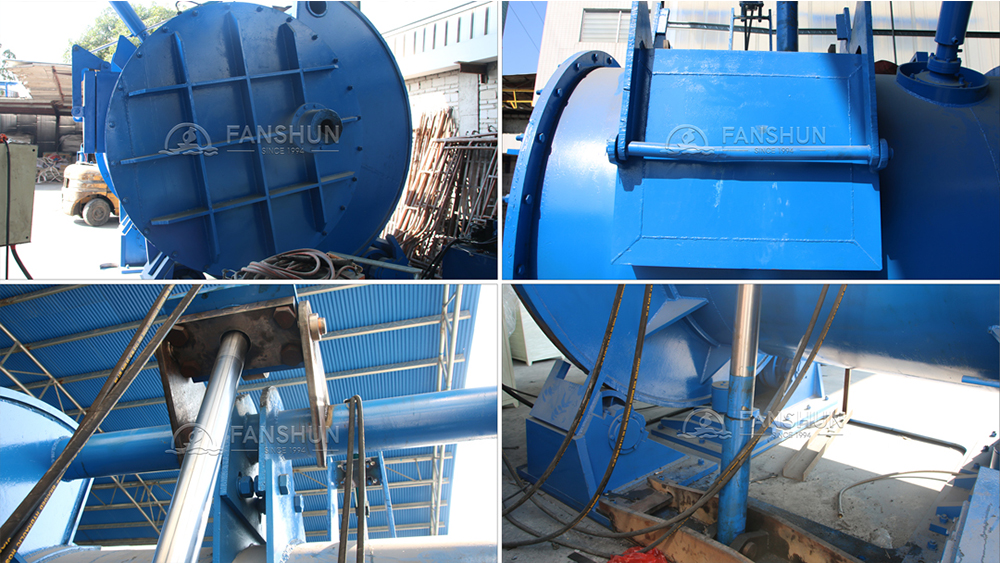How Does a Rotary Furnace Improve Metal Melting Efficiency Compared to Traditional Furnaces?
In today’s metallurgical industry, efficiency, sustainability, and cost control are the leading priorities. More and more manufacturers are asking how a Rotary melting furnace can truly outperform traditional furnaces. This question has become central to discussions in the aluminum, copper, and die casting industries. With the rising demand for lightweight metals, eco-friendly solutions, and lower energy consumption, the Rotary melting furnace, the Rotary aluminum melting furnace, the Aluminum rotary furnace, the die casting electric furnace, and the Copper melting furnace have become the focal points of modern production lines.
Rotary Melting Furnace vs. Traditional Furnaces
The Rotary melting furnace is designed to maximize surface contact between heat and raw materials, creating faster, more uniform melting compared to older reverberatory or crucible furnaces. Unlike conventional systems that waste energy and time, the Rotary melting furnace rotates continuously, ensuring consistent exposure and reduced oxidation losses. This efficiency has made the Rotary aluminum melting furnace and the Aluminum rotary furnace extremely popular in aluminum recycling, secondary aluminum production, and die casting preparation.
Manufacturers also highlight that the Rotary melting furnace cuts fuel consumption by up to 30%. Compared to traditional melting units, the Rotary aluminum melting furnace achieves higher metal recovery rates. The Aluminum rotary furnace is recognized worldwide as a key solution in reducing metal loss and improving melting efficiency, particularly in recycling aluminum scraps for the die casting electric furnace industry.
Efficiency in Aluminum Recycling
Aluminum recycling is one of the most important sectors where the Rotary aluminum melting furnace and the Aluminum rotary furnace excel. In traditional furnaces, aluminum oxidation leads to significant metal loss. However, the Rotary aluminum melting furnace significantly reduces this oxidation, improving yield by as much as 10%. For companies investing in large-scale recycling operations, the Aluminum rotary furnace ensures faster batch turnaround, lower energy bills, and increased profitability.
By integrating with a die casting electric furnace, the Rotary aluminum melting furnace feeds high-quality molten aluminum directly into die casting production. This seamless process eliminates bottlenecks, reduces downtime, and ensures steady, reliable metal quality. It is no wonder that global die casting factories are shifting from older technologies to the Rotary melting furnace and the Aluminum rotary furnace for both economic and ecological benefits.
Applications in Copper Processing
The Copper melting furnace remains an essential piece of equipment for copper rod, copper ingot, and copper scrap recycling. However, when combined with the Rotary melting furnace, production efficiency skyrockets. The rotational design allows the Copper melting furnace to achieve cleaner melts, better homogenization, and faster turnaround. For copper industries requiring high-purity outputs, the Copper melting furnace works hand-in-hand with the Rotary melting furnace to minimize impurities.
In addition, foundries that rely on both the Copper melting furnace and the Rotary aluminum melting furnace report better consistency in molten metal delivery. This integration supports industries ranging from electrical wire production to automotive component manufacturing. The Aluminum rotary furnace and the Copper melting furnace together form a powerful combination, capable of delivering efficiency that traditional units cannot match.
Role of the Die Casting Electric Furnace
Die casting remains one of the most demanding processes in the metal industry, and the die casting electric furnace is at the center of this workflow. By pairing a die casting electric furnace with a Rotary aluminum melting furnace or an Aluminum rotary furnace, manufacturers gain unparalleled consistency in molten aluminum supply. The die casting electric furnace thrives on high-quality molten feed, and the Rotary melting furnace ensures that feed arrives in optimal condition.
Many manufacturers confirm that the integration of the die casting electric furnace with the Rotary melting furnace improves product quality, reduces casting defects, and shortens cycle times. The die casting electric furnace benefits not only from the temperature stability provided by the Aluminum rotary furnace, but also from the reduced oxidation and better thermal distribution offered by the Rotary aluminum melting furnace.
Global Market Adoption
Across Europe, Asia, and North America, the adoption of the Rotary melting furnace, the Rotary aluminum melting furnace, the Aluminum rotary furnace, the die casting electric furnace, and the Copper melting furnace continues to rise. Industry analysts report that global demand for the Rotary aluminum melting furnace is growing at an annual rate of more than 7%, particularly due to the expansion of aluminum recycling plants. The Aluminum rotary furnace is increasingly replacing reverberatory furnaces as industries chase both higher efficiency and lower carbon footprints.
For copper production, the Copper melting furnace remains indispensable, but modern plants now pair it with the Rotary melting furnace to achieve faster, cleaner melts. Meanwhile, die casting companies rely heavily on the die casting electric furnace supported by the Rotary aluminum melting furnace to guarantee competitive production cycles.
Conclusion
So, how does a Rotary melting furnace improve efficiency compared to traditional furnaces? The answer is clear: it reduces energy consumption, increases metal recovery, improves yield, and integrates seamlessly with modern production technologies like the die casting electric furnace. For aluminum, the Rotary aluminum melting furnace and the Aluminum rotary furnace have transformed recycling and die casting supply chains. For copper, the Copper melting furnace paired with rotary technology ensures cleaner, faster, and more profitable production.
In short, the Rotary melting furnace, the Rotary aluminum melting furnace, the Aluminum rotary furnace, the die casting electric furnace, and the Copper melting furnace represent the future of efficient, eco-friendly, and cost-effective metal processing. The global shift is underway, and those who adopt rotary technology today are already setting the benchmarks for tomorrow’s industry.

Accessories for tilting furnaces


